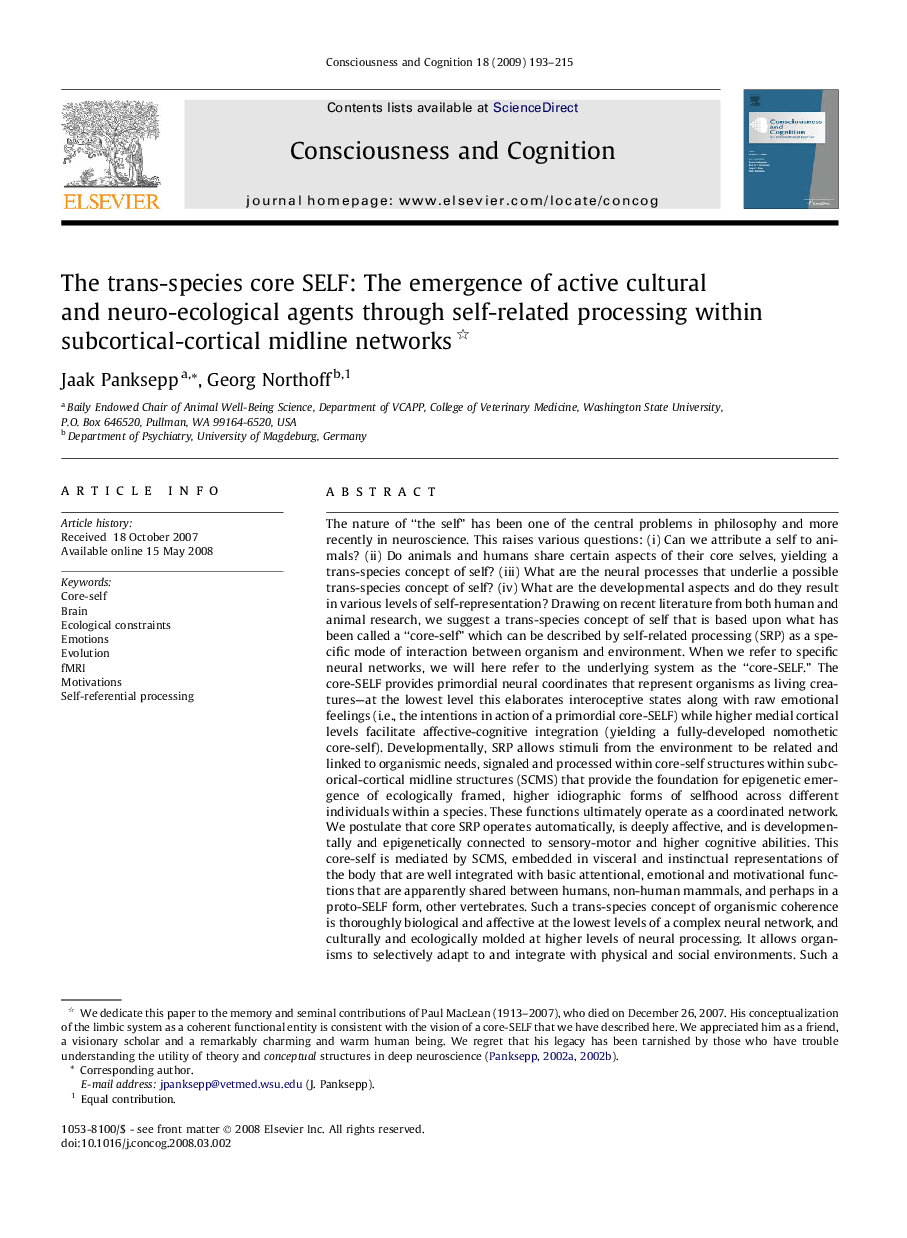| کد مقاله | کد نشریه | سال انتشار | مقاله انگلیسی | نسخه تمام متن |
|---|---|---|---|---|
| 927866 | 922279 | 2009 | 23 صفحه PDF | دانلود رایگان |

The nature of “the self” has been one of the central problems in philosophy and more recently in neuroscience. This raises various questions: (i) Can we attribute a self to animals? (ii) Do animals and humans share certain aspects of their core selves, yielding a trans-species concept of self? (iii) What are the neural processes that underlie a possible trans-species concept of self? (iv) What are the developmental aspects and do they result in various levels of self-representation? Drawing on recent literature from both human and animal research, we suggest a trans-species concept of self that is based upon what has been called a “core-self” which can be described by self-related processing (SRP) as a specific mode of interaction between organism and environment. When we refer to specific neural networks, we will here refer to the underlying system as the “core-SELF.” The core-SELF provides primordial neural coordinates that represent organisms as living creatures—at the lowest level this elaborates interoceptive states along with raw emotional feelings (i.e., the intentions in action of a primordial core-SELF) while higher medial cortical levels facilitate affective-cognitive integration (yielding a fully-developed nomothetic core-self). Developmentally, SRP allows stimuli from the environment to be related and linked to organismic needs, signaled and processed within core-self structures within subcorical-cortical midline structures (SCMS) that provide the foundation for epigenetic emergence of ecologically framed, higher idiographic forms of selfhood across different individuals within a species. These functions ultimately operate as a coordinated network. We postulate that core SRP operates automatically, is deeply affective, and is developmentally and epigenetically connected to sensory-motor and higher cognitive abilities. This core-self is mediated by SCMS, embedded in visceral and instinctual representations of the body that are well integrated with basic attentional, emotional and motivational functions that are apparently shared between humans, non-human mammals, and perhaps in a proto-SELF form, other vertebrates. Such a trans-species concept of organismic coherence is thoroughly biological and affective at the lowest levels of a complex neural network, and culturally and ecologically molded at higher levels of neural processing. It allows organisms to selectively adapt to and integrate with physical and social environments. Such a psychobiologically universal, but environmentally diversified, concept may promote novel trans-species studies of the core-self across mammalian species.
Journal: Consciousness and Cognition - Volume 18, Issue 1, March 2009, Pages 193–215